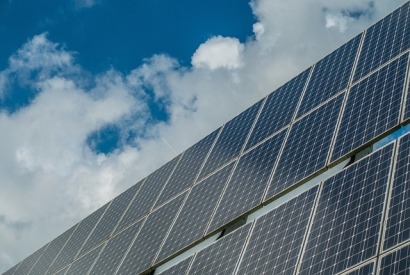
In its latest "Energy Infrastructure Update" (with data through January 31, 2024), FERC reports that solar accounted for 2,527 megawatts of new generating capacity in the first month of this year – or 87.3% of the total. That is the second highest monthly total ever reported for solar, behind only the prior month when 4,979-MW were added.
The new solar capacity reported for January was accompanied by 320-MW of new wind capacity as well as 44-MW of natural gas, 2-MW of oil, and 3-MW classified as "other." Thus, renewable sources accounted for 98.3% of capacity additions in January.
The new solar and wind brought the total available installed generating capacity of renewable energy sources (i.e., also including hydropower, biomass, and geothermal) up to 376.33 gigawatts or 29.17% of all U.S. generating capacity.
In fact, installed utility-scale solar capacity (104.61-GW) alone now exceeds that of not only nuclear power but also hydropower (101.41-GW) ... and that does not include the additional capacity of small-scale, distributed solar (e.g., rooftop systems) which accounts for more than 30% of all solar.
Moreover, FERC suggests that utility-scale solar capacity should also exceed that of wind within the next 2-3 years. Between February 2024 and January 2027, FERC anticipates net "high probability" additions of solar to total 85,419-MW.
FERC also expects 24,443-MW of net new wind additions plus 561-MW of net new hydropower and 400-MW of net new geothermal. Biomass capacity would also decrease by 68-MW while the new Vogtle-4 nuclear reactor nearing completion in Georgia would add 1,100-MW.
The result of just the net "high probability" additions is that by early 2027, solar would account for 13.83% of total available installed generating capacity while wind would be 12.79%. Taken together, all renewables would provide 35.45% of the total – approaching that of natural gas (40.88%) and substantially surpassing that of coal (13.45%), nuclear power (7.60%), and oil (2.48%) combined.
"The rapid growth by solar in both capacity additions and electrical generation shows no signs of stopping or slowing down," noted Ken Bossong, Executive Director the SUN DAY Campaign. "Despite a slow start in January, the mix of all renewables seem poised to continue expanding its share of U.S. electrical generation and generating capacity this year and beyond."

